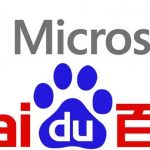Sensory’s new Fujitsu partnership means your face could become a lot more valuable to enterprises
Mizuho, the 15th largest bank in the world, will become the latest user of Sensory’s facial authentication.

When biometric authentication becomes as widespread as passwords, logins become as easy as looking at or speaking to your device.
Such a scenario means that users could just as easily be logged on as not — a kind of heaven for marketers eager to know the identities of their audience.
This week, biometric authentication took another step toward that future with the announcement of a partnership between embedded AI firm Sensory and tech company Fujitsu. As a result of that alliance, the Japanese bank Mizuho — the 15th largest in the world — will begin using facial authentication.
Founded in 1994, Sensory has focused on employing its neural net artificial intelligence in communications devices like smartphones or toys. Several years ago, the Santa Clara, California-based firm began employing its AI in support of facial and voice recognition, such as applications in the Jibo personal robot and mobile devices from Motorola and LG.
Sensory’s TrulySecure tech will now become part of Fujitsu’s tech stack that it offers to various enterprises, such as a product line designed to help banks with their security. Since bank customers are increasingly using mobile apps to conduct much of their banking activity, Mizuho customers will be able to sign in with their face instead of remembering passwords.
Six months ago, the Mexican bank Banorte became the first financial institution to employ the TrulySecure biometric authentication tech. Sensory CEO Todd Mozer told me that his company is also working with Samsung and Diebold to bring such authentication to automated teller machines (ATMs).
He noted that his company’s TrulySecure tech is pre-trained to recognize faces on the company’s computers and supporting cloud.
When used the first time on a smartphone, facial authentication takes up to 15 seconds for the machine learning to get up to speed, and then it can recognize users almost instantly on subsequent occasions. But, Mozer pointed out, the user’s facial imagery stays on the device and is not sent to the cloud. Here’s a video demo of TrulySecure, with its Liveness detection:
He added that the Fujitsu deal could increase the use of Sensory’s facial or voice recognition in other enterprise environments besides banks, such as retail. According to one report, the global facial recognition market alone is expected to nearly double within five years from about $4 billion in revenue this year.
Biometric authentication accuracy rates, according to Sensory, can be as high as 99.9 percent if face and voice are used together. For face alone, assuming reasonable lighting, Mozer said that his company’s technology would incorrectly authenticate only one person in every 100,000.
Although biometric recognition could be a boon for marketers, it could also present a major new challenge for data management.
Although technology like TrulySecure doesn’t transmit your face or voice to the cloud, the rendered analysis of your biometrics is transmitted so that you can enter a bank’s system. Even if the imagery stays local, the use of your face or your voice as a primary security key for most transactions means that the whole nature of consumer data protection takes on another dimension.
Marketing Land – Internet Marketing News, Strategies & Tips
(22)













